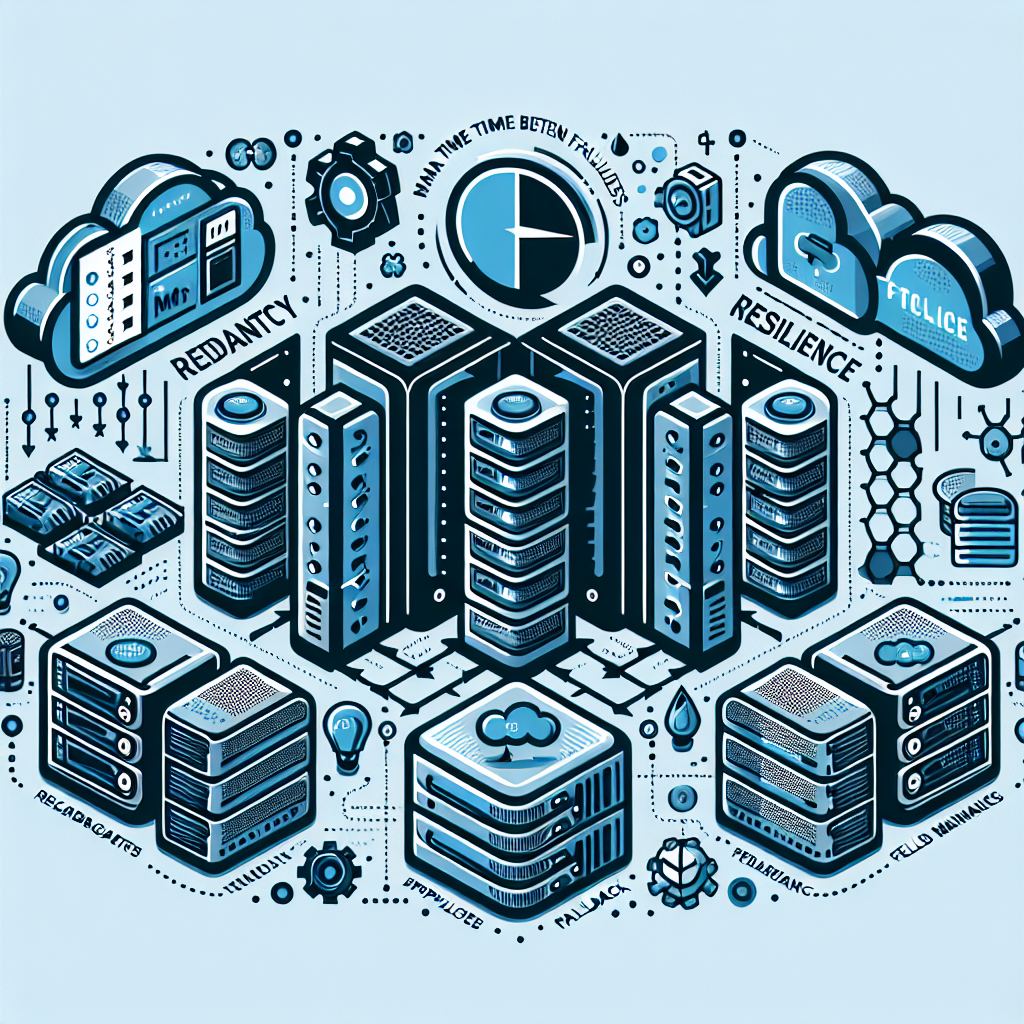Your cart is currently empty!
Implementing Redundancy and Resilience Strategies to Enhance Data Center MTBF

In today’s digital age, data centers play a crucial role in storing and managing vast amounts of data for businesses and organizations. With the increasing reliance on data centers, it is essential to ensure their uptime and reliability. One way to achieve this is by implementing redundancy and resilience strategies to enhance the Mean Time Between Failures (MTBF) of data centers.
Redundancy refers to the practice of having backup systems in place to ensure continued operation in the event of a failure. This can be achieved through various means, such as having redundant power supplies, cooling systems, and network connections. By having redundant components in place, data centers can continue to operate even if one component fails, minimizing downtime and ensuring data availability.
Resilience, on the other hand, refers to the ability of a system to recover quickly from failures and continue to operate without interruption. This can be achieved through the use of resilient infrastructure design, such as distributed systems and fault-tolerant architectures. By designing data centers with resilience in mind, organizations can minimize the impact of failures and maintain high levels of uptime.
Implementing redundancy and resilience strategies can significantly enhance the MTBF of data centers. By reducing the likelihood of failures and minimizing their impact when they do occur, organizations can ensure that their data centers remain operational and reliable. This is particularly important for mission-critical applications and services that rely on continuous access to data.
There are several key strategies that organizations can implement to enhance the redundancy and resilience of their data centers. These include:
1. Redundant power supplies: Ensure that data centers have multiple power supplies with backup generators in place to provide uninterrupted power in the event of a power outage.
2. Redundant cooling systems: Implement redundant cooling systems to prevent overheating and ensure that data center equipment remains at optimal operating temperatures.
3. Redundant network connections: Have multiple network connections in place to ensure continuous connectivity and minimize the risk of network failures.
4. Distributed systems: Implement distributed systems and data replication to ensure that data is stored in multiple locations, reducing the risk of data loss in the event of a failure.
5. Fault-tolerant architectures: Design data centers with fault-tolerant architectures that can continue to operate even if one component fails.
By implementing these strategies, organizations can enhance the MTBF of their data centers and ensure high levels of uptime and reliability. This, in turn, can help businesses and organizations to maintain their operations and provide uninterrupted services to their customers. In today’s competitive business environment, ensuring the reliability of data centers is essential for success, and implementing redundancy and resilience strategies is a key step in achieving this goal.

Leave a Reply